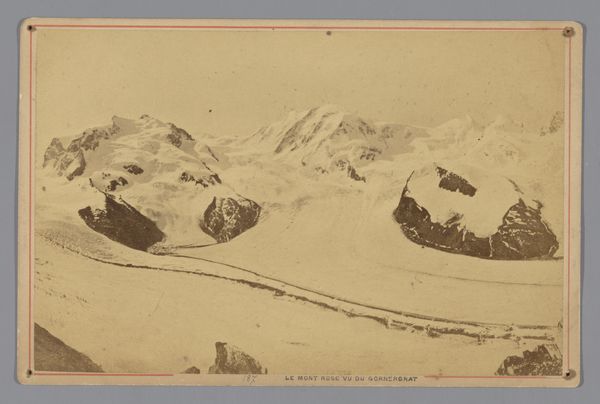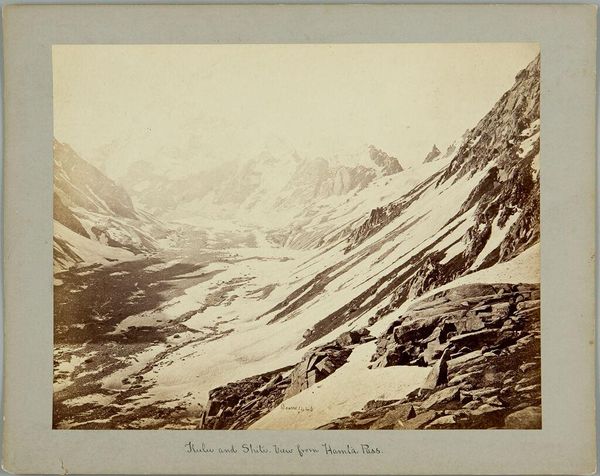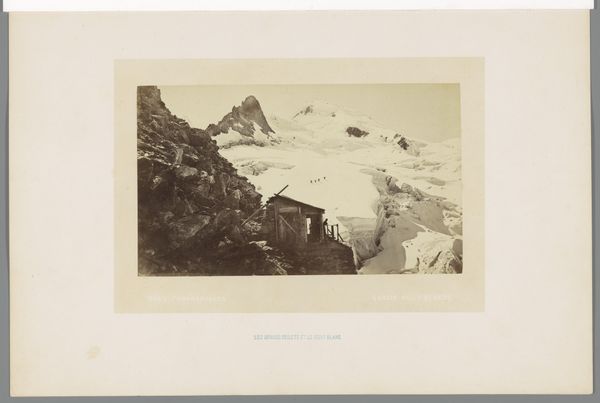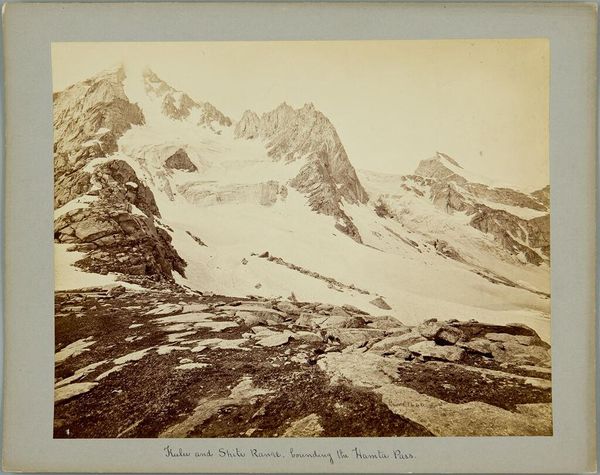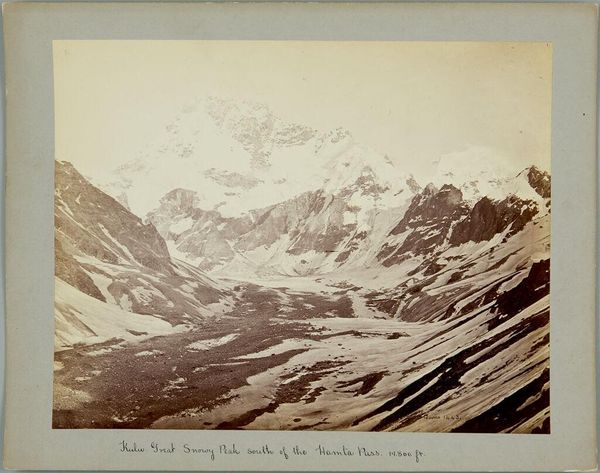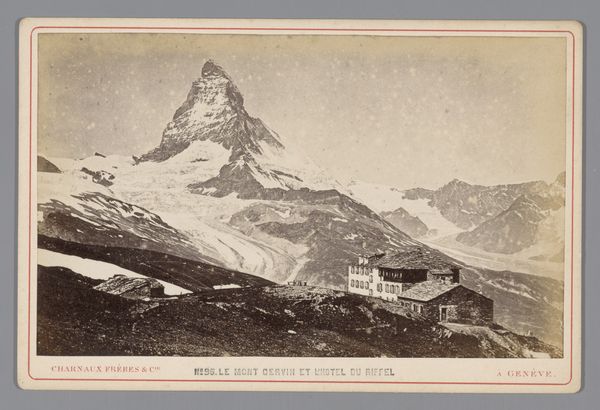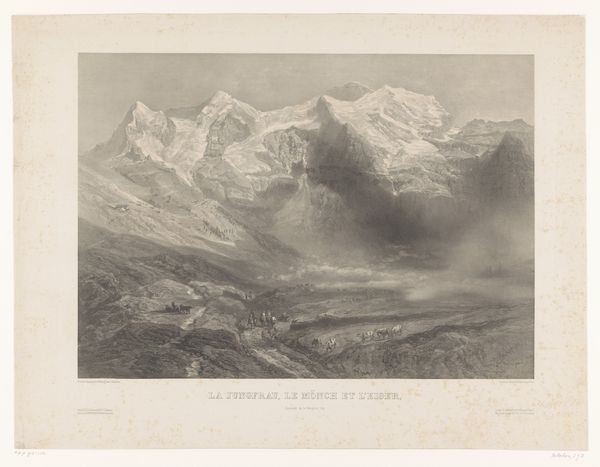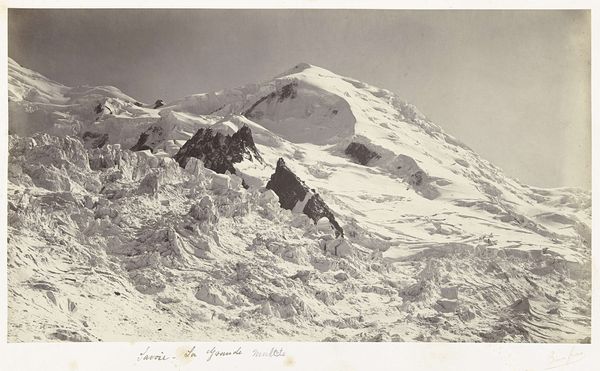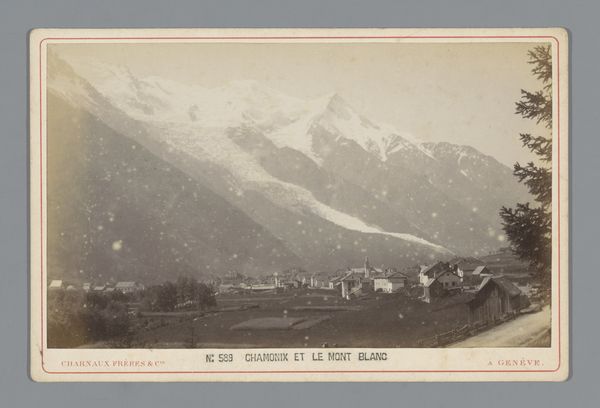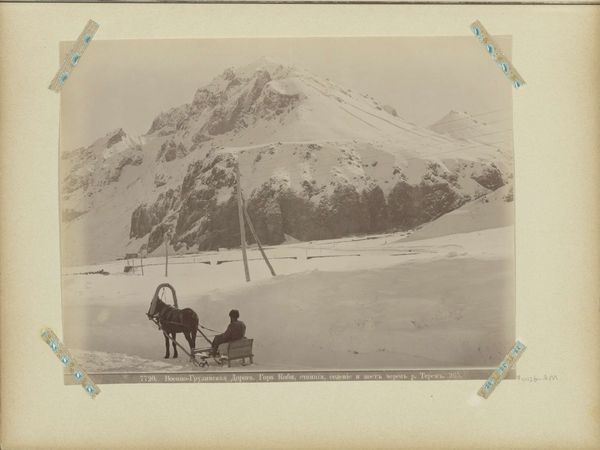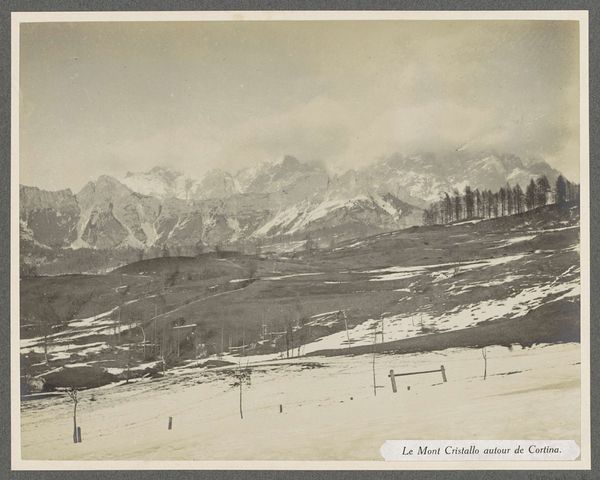
photography, albumen-print
#
pictorialism
#
landscape
#
photography
#
albumen-print
Dimensions: height 93 mm, width 153 mm
Copyright: Rijks Museum: Open Domain
Curator: This albumen print, a photographic process popular in the late 19th century, is entitled "Gezicht op de Lyskamm in Zwitserland", which translates to "View of the Lyskamm in Switzerland." It was produced sometime between 1880 and 1920 by Charnaux Frères & Co. Editor: The starkness of this landscape is striking. The sepia tones lend a sense of melancholy, almost as if the glaciers themselves are receding before our eyes. Curator: Exactly. Mountains often symbolize steadfastness and eternity in visual language, but this piece seems to invite a meditation on transience. Consider the glacier itself, a river of ice—powerful yet vulnerable, carving through stone but also susceptible to warmer conditions. Editor: That sense of vulnerability is definitely palpable. There’s an intersectional narrative at play here—one that speaks to climate change and its impact on our shared landscapes. Early photographs of these kinds give an implicit view on what is lost and yet still remains. The historical context shapes our present-day understanding of the scene. Curator: It's fascinating how photography, even in its early stages, served not just as documentation but also as a carrier of symbolic weight. The mountain becomes a symbol for not only strength but vulnerability, and impermanence, viewed through the lens of today. I would go as far to say that we could connect that early photographical sensibility to concepts in dark ecology that grapple with nature, environment, and uncertainty. Editor: The pictorialist style enhances this emotive impact. Pictorialism valued artistic effect over mere mechanical representation. These alpine landscapes were becoming tourist attractions in the late 19th century. To have this aesthetic associated with mountain viewing is indicative of a European culture fascinated with environmental mastery. Curator: Absolutely. This connects to the notion of the sublime—a popular concept at that time— where the overwhelming scale and power of nature could simultaneously inspire awe and terror. As viewers, our cultural memory holds this image up as a document of what these environments have looked like and are likely going to change drastically soon. Editor: So, in this landscape, we observe a nexus point: intersecting narratives of exploration, environmental mastery, artistic sensibility, and, finally, what we are experiencing today in our unfolding ecological emergency. The past truly informs our present moment. Curator: Indeed. It’s in the act of contemplation—intertwining then and now—that an older photograph reveals so much of ourselves.
Comments
No comments
Be the first to comment and join the conversation on the ultimate creative platform.
